Emily Wilding Davison
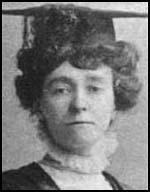
Emily Wilding Davison, the daughter of Charles Davison (1822–1893) and Margaret Caisley Davison (1848–1918), was born at at Roxburgh House, Vanbrugh Park Road, Greenwich on 11th October, 1872.
After attending Kensington High School (1885–91) she won a place at Royal Holloway College to study literature but two years later she was forced to leave after her recently widowed mother was unable to find the £20 a term fees. Davison now found work as a governess before spending a term (April–June 1895) at St Hugh's Hall, and in the summer of 1895 achieved first-class honours in English in the Oxford University examination for women, though, as Oxford degrees were closed to women, this did not enable her to graduate.
In 1895 she began teaching at the Church of England College for Girls at Edgbaston. The following year she found employment at Seabury School, Worthing (1896–8). Eventually she raised enough money to return to university education. After graduating from University of London she obtained a post teaching the children of a family in Berkshire.
Emily Wilding Davison and the WSPU
Emily joined the Women's Social and Political Union in 1906. She gradually became more and more involved in WSPU activities and in June 1908, was one of the chief stewards at a WSPU demonstration in London. The following year Emily gave up full-time teaching so that she could devote more of her time to the WSPU. Emily also became involved with the Workers' Educational Association.
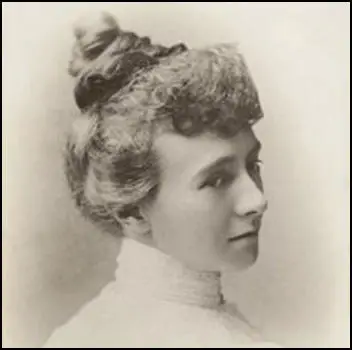
Emmeline Pankhurst met Davison during this period: "Emily Wilding Davison was a character almost inevitably developed by a struggle such as ours. She was a B.A. of London University, and had taken first-class honours at Oxford in English Language and Literature. Yet the women's cause made such an appeal to her reason and her sympathies that she put every intellectual and social appeal aside and devoted herself untiringly and fearlessly to the work of the Union."
In March 1909, Emily Davison was arrested while attempting to hand a petition to the Prime Minister, Herbert Asquith. Emily was found guilty of causing a disturbance and sentenced to one-month imprisonment. Four months later she was in prison again for trying to get into a hall in London where David Lloyd George, the Chancellor of the Exchequer, was making a speech. Emily went on hunger strike and after five days she was released. In September 1909 she received a sentence of two months for stone throwing. Once again, she was released after going on hunger strike.
Strangeways Prison
A few days after leaving prison, Emily Davison, Mary Leigh and Constance Lytton were caught throwing stones at a car taking David Lloyd George to a meeting in Newcastle. The stones were wrapped in Emily's favourite words: "Rebellion against tyrants is obedience to God." The women were found guilty and sentenced to one month's hard labour at Strangeways Prison. The women went on hunger strike but this time the prison authorities decided to force-feed the women. In an attempt to avoid force-feeding, Emily used prison furniture to barricade the door of her prison cell. A prison officer climbed a ladder and after forcing the nozzle of a hosepipe through a window, filled up the cell with water. Emily was willing to die, but before the cell had been completely filled with water the door was broken down.
Force-Feeding
In a letter to a friend Davison explained what it was like to be force-fed: "In the evening the matron, two doctors, and five or six wardresses entered the cell. The doctor said 'I am going to feed you by force.' The scene, which followed, will haunt me with its horror all my life, and is almost indescribable. While they held me flat, the elder doctor tried all round my mouth with a steel gag to find an opening. On the right side of my mouth two teeth are missing; this gap he found, pushed in the horrid instrument, and prised open my mouth to its widest extent. Then a wardress poured liquid down my throat out of a tin enamelled cup. What it was I cannot say, but there was some medicament, which was foul to the last degree. As I would not swallow the stuff and jerked it out with my tongue, the doctor pinched my nose and somehow gripped my tongue with the gag. The torture was barbaric."
Davison also tried to commit suicide. She later recalled: "In my mind was the thought that some desperate protest must be made to put a stop to the hideous torture, which was now our lot. Therefore, as soon as I got out I climbed on to the railing and threw myself out to the wire-netting, a distance of between 20 and 30 feet. The idea in my mind was one big tragedy may save many others. I realised that my best means of carrying out my purpose was the iron staircase. When a good moment came, quite deliberately I walked upstairs and threw myself from the top, as I meant, on to the iron staircase. If I had been successful I should undoubtedly have been killed, as it was a clear drop of 30 to 40 feet. But I caught on the edge of the netting. I then threw myself forward on my head with all my might. I know nothing more except a fearful thud on my head. When I recovered consciousness, it was to a sense of acute agony."
James Keir Hardie, the leader of the Labour Party, complained about the treatment of Emily Davison in the House of Commons. The general public appeared to agree that Davison had been badly treated. Emily decided took legal action against the men at Strangeways who had been responsible for the hosepipe incident. On 19th January 1910, Judge Parry pronounced in Emily's favour, awarding damages of forty shillings.
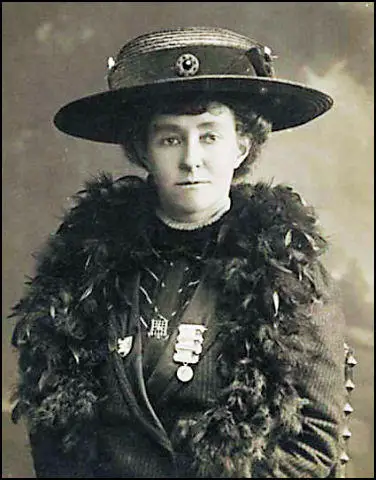
On Emily Davison's release she began working full-time for the Women's Social and Political Union and contributed articles and reviews to their newspaper, Votes for Women. In April 1911 when she spent the night in a cupboard near the crypt chapel in order that the census recorded it as her home.
Sylvia Pankhurst later described Davison as "tall and slender, with unusually long arms, a small narrow head and red hair. Her illusive, whimsical green eyes and thin, half-smiling mouth, bore often the mocking expression of the Mona Lisa". According to the authors of The Life and Death of Emily Wilding Davison (1988) she was a socialist and was an active member of the Workers' Educational Association and the Central Labour College.
Arson Campaign
The scale of her militant acts increased and in December 1911 she was arrested for setting fire to pillar-boxes. According to Sylvia Pankhurst this action was not approved by the WSPU. Vera Di Campli claims that "in keeping with her consistent rejection of authority, she now fell out of favour with the WSPU leadership over her independent and unauthorized programme of militant actions." Davison was sentenced to six months and during her spell in prison she went on two hunger strikes.
Martyrdom
Emily Davison was now convinced that women would not win the vote until the suffragette movement had a martyr. Emily took the decision to draw attention to the suffragette campaign by jumping down an iron staircase. Emily landed on wire-netting, 30 feet below. This prevented her death but she suffered severe spinal injuries.
Once she had recovered her health, Emily Davison began making plans to commit an act that would give the movement maximum publicity. In June, 1913, she attended the most important race of the year, the Derby, with Mary Richardson: "A minute before the race started she raised a paper on her own or some kind of card before her eyes. I was watching her hand. It did not shake. Even when I heard the pounding of the horses' hoofs moving closer I saw she was still smiling. And suddenly she slipped under the rail and ran out into the middle of the racecourse. It was all over so quickly." Davison ran out on the course and attempted to grab the bridle of Anmer, a horse owned by King George V. The horse hit Emily and the impact fractured her skull and she died on 8th June without regaining consciousness.
Among the articles found in her possession were two WSPU flags, a racecard, and a return train ticket to Victoria Station. This has resulted in some historians arguing that she did not intend to kill herself. Sylvia Pankhurst has argued: "Emily Davison and a fellow-militant in whose flat she lived, she had concerted a Derby protest without tragedy - a mere waving of the purple-white-and-green at Tattenham Corner, which, by its suddenness, it was hoped would stop the race. Whether from the first her purpose was more serious, or whether a final impulse altered her resolve, I know not. Her friend declares she would not thus have died without writing a farewell message to her mother." Other research has indicated that Davidson intended to attach a WSPU scarf to the king's horse.
However, Emmeline Pankhurst believed that Davidson wanted to become a martyr. She wrote in her biography, My Own Story (1914): "Emily Davison clung to her conviction that one great tragedy, the deliberate throwing into the breach of a human life, would put an end to the intolerable torture of women. And so she threw herself at the King's horse, in full view of the King and Queen and a great multitude of their Majesties' subjects."
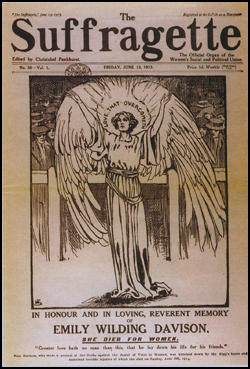
The historian, Martin Pugh, believes it is impossible to know if she intended to commit suicide: "Davison's detachment from the formal organisation complicates the task of explaining her motives... As a result no contemporary really knew whether Davison intended suicide. The evidence is inconclusive... Admittedly on two occasions she had thrown herself over the railings in Holloway prison (which were designed to prevent suicides) and she is on record as telling the prison doctor in June 1912 that 'a tragedy is wanted'. But what did that mean? Contemporary medical evidence commonly regarded women, and suffragettes in particular, as prone to hysteria and thus as suicidal."
Funeral
Sylvia Pankhurst described the funeral in her book, The Suffrage Movement (1931): "A solemn funeral procession was organised to do her honour. To the militants who had prepared so many processions, this was the natural manifestation The call to women to come garbed in black carrying purple irises, in purple with crimson peonies, in white bearing laurel wreaths, received a response from thousands who gathered from all parts of the country. Graduates and clergy marched in their robes, suffrage societies, trade unionists from the East End, unattached people. The streets were densely lined by silent, respectful crowds. The great public responded to the appeal of a life deliberately given for an impersonal end. The police had issued a notice which was virtually a prohibition of the procession, but at the same time constables were enjoined to reverent conduct."
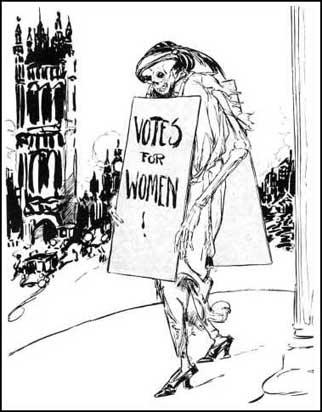
Although many suffragettes endangered their lives by hunger strikes, Emily Wilding Davison was the only one who deliberately risked death. However, her actions did not have the desired impact on the general public. They appeared to be more concerned with the health of the horse and jockey and Davison was condemned as a mentally ill fanatic. Non-militant women leaders such as Helena Swanwick denounced suffragette martyrdom as a "contrived and dishonest policy by women who, they felt, should be prepared to accept their punishment for acts of violence".
Martin Pugh has argued that the campaign for the vote was hurt by Davison's action: "The unfortunate Anmer had to be put down as a result of his injuries and, although one should not exaggerate the English sentimentally towards animals, it cannot be ignored. Moreover, although Davison had not targeted Anmer, some people took her intervention as an insult to the king. Finally, though Anmer was not likely to have won the race, those who had placed bets on the royal runner found it tempting to blame their disappointment on this suffragette outrage."
Primary Sources
(1) The Manchester Evening Chronicle described what happened at the Liberal Party meeting at the Free Town Hall on 20th October 1905.
Miss Christabel Pankhurst and Miss Annie Kenney were ejected and later arrested for obstruction outside the building. At the police court Miss Pankhurst was fined half a guinea for assaulting the police officers by hitting them in the mouth and spitting in their faces, and five shillings for obstruction, or in default seven days. Miss Kenney was fined five shillings, or three days. Rather than pay the fine the ladies elected to undergo the imprisonment.
Miss Kenney was released on Monday morning. Miss Pankhurst period expired this morning. By seven o'clock about two hundred people had collected outside the gates of Strangeways Gaol. When Miss Christabel appeared she was hailed with a great cheer and instantly surrounded by a host of male and female admirers. The first to greet and embrace the prisoner was her mother, Miss Pankhurst. Miss Pankhurst fell into the arms of her mother, and the two wept for joy after having been parted for a whole week. As soon as she could break away from her admirers Miss Pankhurst called out, "I will go in again for the same cause. Don't forget the vote for women."
(2) Emily Davison was arrested on 30th July 1909 when she disrupted a speech being made by David Lloyd George at Limehouse in London.
We went outside Lloyd George's meeting at Limehouse. I was busy haranguing the crowd when the police came up and arrested me. We were charged next day at Thames Police Court. I and Mrs. Leigh got the longest sentences, i.e., two months, the rest mostly got two weeks. The governor told us that if we went quietly to our cells we could keep our clothes. Then they took us off one by one after a struggle. When I was shut in the cell I at once smashed seventeen panes of glass. Then they rushed me into another cell. They forcibly undressed me and left me sitting in a prison chemise. Then I was dressed in prison clothes and taken into one of the worst cells, very dark, with double doors.
(3) Emily Davison was sent to Strangeways Prison in September 1909, for throwing stones at the windows of the Liberal Club. Emily decided to go on hunger strike. This account was included in a letter that she wrote to a friend in Switzerland.
In the evening the matron, two doctors, and five or six wardresses entered the cell. The doctor said "I am going to feed you by force." The scene, which followed, will haunt me with its horror all my life, and is almost indescribable. While they held me flat, the elder doctor tried all round my mouth with a steel gag to find an opening. On the right side of my mouth two teeth are missing; this gap he found, pushed in the horrid instrument, and prised open my mouth to its widest extent. Then a wardress poured liquid down my throat out of a tin enamelled cup. What it was I cannot say, but there was some medicament, which was foul to the last degree. As I would not swallow the stuff and jerked it out with my tongue, the doctor pinched my nose and somehow gripped my tongue with the gag. The torture was barbaric.
(4) On June 19th 1909 Emily Davison decided to make a protest against forcible feeding. Emily explained her actions in a statement issued by the WPSU.
In my mind was the thought that some desperate protest must be made to put a stop to the hideous torture, which was now our lot. Therefore, as soon as I got out I climbed on to the railing and threw myself out to the wire-netting, a distance of between 20 and 30 feet. The idea in my mind was one big tragedy may save many others. I realised that my best means of carrying out my purpose was the iron staircase. When a good moment came, quite deliberately I walked upstairs and threw myself from the top, as I meant, on to the iron staircase. If I had been successful I should undoubtedly have been killed, as it was a clear drop of 30 to 40 feet. But I caught on the edge of the netting. I then threw myself forward on my head with all my might. I know nothing more except a fearful thud on my head. When I recovered consciousness, it was to a sense of acute agony.
(5) Sylvia Pankhurst, The Suffrage Movement (1931)
Militancy was now assuming a new and serious aspect. In December 1911 and March 1912, Emily Wilding Davison and Nurse Pitfield had committed spectacular arson on their own initiative, both doing their deeds openly and suffering arrest and punishment. In July 1912, secret arson began to be organised under the direction of Christabel Pankhurst. When the policy was fully under way, certain officials of the Union were given, as their main work, the task of advising incendiaries, and arranging for the supply of such inflammable material, house-breaking tools, and other matters as they might require. A certain exceedingly feminine-looking young lady was strolling about London, meeting militants in all sorts of public and unexpected places, to arrange for perilous expeditions. Women, most of them very young, tolled through the night across unfamiliar country, carrying heavy cases of petrol and paraffin. Sometimes they failed, sometimes succeeded in setting fire to an untenanted building - all the better if it were the residence of a notability - or a church, or other place of historic interest. Occasionally they were caught and convicted; usually they escaped.
(6) Sylvia Pankhurst, The Suffrage Movement (1931)
On the eve of the Derby she (Emily Davison) went with two friends to a W.S.P.U. bazaar in the Empress Rooms, Kensington, where, amid the trivial artificiality of a bazaar-fitter's ornamental garden, and the chatter of buying and selling at the stalls, she had joined in laying a wreath on the plaster statue of Joan of Arc, whom Christabel had called "the patron saint of Suffragettes". With a fellow-militant in whose flat she lived, she had concerted a Derby protest without tragedy - a mere waving of the purple-white-and-green at Tattenham Corner, which, by its suddenness, it was hoped would stop the race. Whether from the first her purpose was more serious, or whether a final impulse altered her resolve, I know not. Her friend declares she would not thus have died without writing a farewell message to her mother. Yet she had sewed the W.S.P.U. colours inside her coat as though to ensure that no mistake could be made as to her motive when her dead body should be examined. So she set forth alone, the hope of a great achievement surging through her mind. With sure resolve she ran out onto the course and deliberately flung herself-upon the King's horse, Anmer, that her deed might be the more pointed. Her skull was fractured. Incurably injured, she was removed to the Epsom Cottage Hospital, and there died on June 8 without regaining consciousness. As life lingered in her for two days, Mansell-Moullin performed an operation, which, in surgeon's parlance, "gave great temporary relief," but the injured brain did not inend.
A solemn funeral procession was organised to do her honour. To the militants who had prepared so many processions, this was the natural manifestation The call to women to come garbed in black carrying purple irises, in purple with crimson peonies, in white bearing laurel wreaths, received a response from thousands who gathered from all parts of the country. Graduates and clergy marched in their robes, suffrage societies, trade unionists from the East End, unattached people. The streets were densely lined by silent, respectful crowds. The great public responded to the appeal of a life deliberately given for an impersonal end. The police had issued a notice which was virtually a prohibition of the procession, but at the same time constables were enjoined to reverent conduct.
(7) Sylvia Pankhurst described Emily Davison's act at the 1913 Derby in her book The Suffrage Movement.
Emily Davison and a fellow-militant in whose flat she lived, she had concerted a Derby protest without tragedy - a mere waving of the purple-white-and-green at Tattenham Corner, which, by its suddenness, it was hoped would stop the race. Whether from the first her purpose was more serious, or whether a final impulse altered her resolve, I know not. Her friend declares she would not thus have died without writing a farewell message to her mother.
(8) Emmeline Pankhurst, My Own Story (1914)
Emily Wilding Davison was a character almost inevitably developed by a struggle such as ours. She was a B.A. of London University, and had taken first-class honours at Oxford in English Language and Literature. Yet the women's cause made such an appeal to her reason and her sympathies that she put every intellectual and social appeal aside and devoted herself untiringly and fearlessly to the work of the Union. She had suffered many imprisonments, had been forcibly fed and most brutally treated. On one occasion when she had barricaded her cell against the prison doctors, a hose pipe was turned on her from the window and she was drenched and all but drowned in the icy water while workmen were breaking down her cell door. Miss Davison, after this experience, expressed to several of her friends the deep conviction that now, as in days called uncivilised, the conscience of the people would awaken only to the sacrifice of a human life.
At one time in prison she tried to kill herself by throwing herself headlong from one of the upper galleries, but she succeeded only in sustaining cruel injuries. After that time she clung to her conviction that one great tragedy, the deliberate throwing into the breach of a human life, would put an end to the intolerable torture of women. And so she threw herself at the King's horse, in full view of the King and Queen and a great multitude of Their Majesties' subjects, offering up her life as a petition to the King, praying for the release of suffering women throughout England and the world. None can possibly doubt that that prayer can forever remain unanswered, for she took, it straight to the Throne of the King of all the worlds.
(9) Mary Richardson was with Emily Davison at the Derby in 1913. Mary Richardson wrote about the incident in her book Laugh a Defiance (1953).
She stood alone there, close to the white-painted rails where the course bends round at Tattenham Corner; she looked absorbed and yet far away from everybody else and seemed to have no interest in what was going on round her.
A minute before the race started she raised a paper of her own or some kind of card before her eyes. I was watching her hand. It did not shake. Even when I heard the pounding of the horses' hoofs moving closer I saw she was still smiling. And suddenly she slipped under the rail and ran out into the middle of the racecourse. It was all over so quickly. Emily was under the hoofs of one of the horses and seemed to be hurled for some distance across the grass. The horse stumbled sideways and its jockey was thrown from its back. She lay very still.
(10) The Daily Mirror, (5th June, 1913)
Anmer struck the woman with his chest, and she was knocked over screaming. Blood rushed from her nose and mouth. The king's horse turned a complete somersault, and the jockey, Herbert Jones, was knocked off and seriously injured. An immense crowd at once invaded the course. The woman was picked up and placed in a motor car and taken in an ambulance to Epsom Cottage Hospital.
(11) Votes for Women (12th June, 1913)
Waiting there in the sun, in that gay scene, among the heedless crowd, she had in her soul the thought, the vision of wronged women. That thought she held to her; that vision she kept before her. Thus inspired, she threw herself into the fierce current of the race. So greatly did she care for freedom that she died for it.
(12) The Suffragette (13th June 1913)
Miss Davison, who was completely unconscious, was taken at once to the Epsom Cottage Hospital. The shock of the injuries she had sustained was so severe that for some time it was not thought that she would rally at all. On Thursday afternoon her pulse was a little better, but it was evident that there was bleeding going on inside the skull from a fracture across the base, and from the injured brain. On Friday an operation was performed which gave great temporary relief, but the injured portion of the brain never recovered, and the heart and the breathing gradually failed.
(13) In her book Unshackled, Christabel Pankhurst described how she reacted to the news of Emily Davison's death.
Mother was ill from her second hunger-strike when there came the news of Emily Davison's historic act. She had stopped the King's horse at the Derby and was lying mortally injured. We were startled as everyone else. Not a word had she said of her purpose. Taking counsel with no one, she had gone to the racecourse, waited her moment, and rushed forward. Horse and jockey were unhurt, but Emily Davison paid with her life for making the whole world understand that women were in earnest for the vote. Probably in no other way and at no other time and place could she so effectively have brought the concentrated attention of millions to bear upon the cause.

